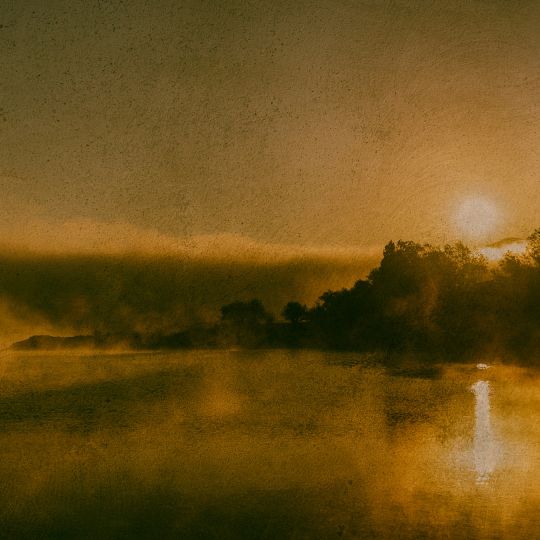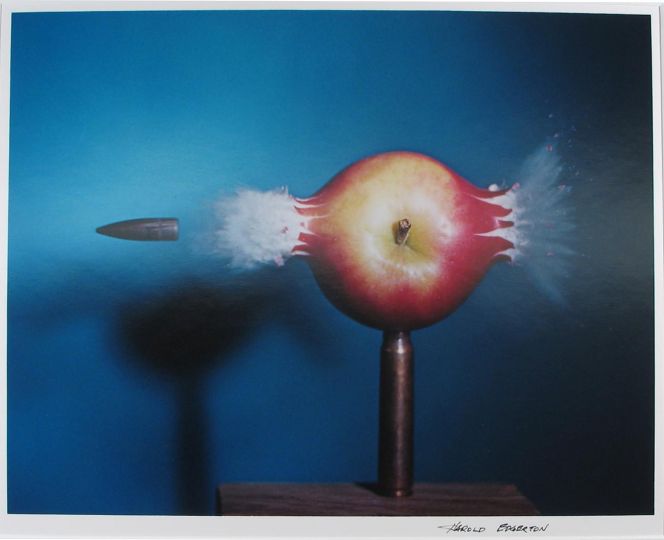Meeting iconic figures from the international world of photography is always exciting, and my encounter with David Fahey, the legendary gallerist from Los Angeles, was no exception. In April 2022, I had the delightful opportunity to meet him, all thanks to Greg Gorman. For many years, the name Fahey Klein Gallery kept crossing my path, and as it turns out, over half of the photographers I have collaborated with over the past 17 years had connections with this esteemed gallery: Helmut Newton, Greg Gorman, Christopher Makos, David Drebin, Roger Ballen, Frank Horvat, Sylvie Blum, Ellen von Unwerth, as well as the George Hoyningen-Huene Estate. It goes without saying that I couldn’t resist doing a proper “recap & reload” with its founder, David Fahey. Enjoy the read!
Nadine Dinter. When and how did you start your career in the arts / photography business?
David Fahey: I became involved in the gallery world while finishing my master’s degree in art, focusing on Fine Art photography. While always interested in photography, my first class studying the history of photography set me on a course that I followed, leading me to the gallery world and the business of curating exhibitions and building art collections of Fine Art photography. I finished my graduate studies in the 1970s. In 1975, I was the director of contemporary photography at one of the first galleries in Los Angeles dedicated to photography as an art form.
What was your main motivation for opening a gallery? Do you have any particular role models or idols?
DF: In 1975, when I first began working at a photography gallery, I realized that only a handful of galleries were dedicated to this medium. During this time, I was also working as a teacher of photography at Compton Junior College. I also taught extension classes in photography at two universities in Los Angeles. As a teacher, I became a member of the national organization of the Society for Photographic Educators (SPE). Meetings were held each year at different major cities across the United States. Of course, in these early days, one of the primary ways “serious photographers” could earn a living was to teach photography. Consequently, over time, I developed personal relationships with many influential photographers of the day. These connections became important. When working in the gallery business, I realized my ability to participate in curating exhibitions of these well-known artists, many of whom had never previously or seldom exhibited their work. At this time, opportunities became greater for advancing the power of photography and how it can inform and enhance our lives. In the 1960s, in my later teen years, I used to hitchhike to San Francisco to visit the Focus Gallery and Thackery & Robertson Gallery, which both showed photography as an art form. Of course, one of the other early photography galleries was Witkin Gallery in New York City. After working in a photography gallery here in Los Angeles for 11 years, I opened the Fahey/Klein Gallery with my business partner at the time, Randee Klein. After many years of our successful partnership, Randee gave her business shares to her husband, Ken Devlin. Ken and I worked together for 14 years. Eight years ago, I bought Ken out and became the sole owner of the Fahey/Klein Gallery. Nicholas Fahey, my son, has been the gallery director for the past seven years. I am still very involved with the gallery, working with my longtime special collectors and museum curators, and creating and developing Fine Art photography book projects.
Who was the first artist you signed on?
DF: This is a tough question, as I signed on many artists at the beginning. If I were to say who was first, it would be Herb Ritts.
After how many years in the business did you get the affirmation you needed? What drives you to continue working as a gallerist in your space?
DF: Building an audience locally, nationally, and internationally took many years. With any business, it is always challenging in the beginning. I have been told that you are a success if you open a gallery and survive for more than three years. I have been in the gallery business for 48 years; some reasons are persistence, an eye for great photographs and innovative photographers, offering the best service to our collectors, excellent staff, and, of course, “good luck” plays a large part. One of the most desirable motivators to continue with one’s occupation is the simple joy it brings continuously. Having the opportunity to meet and work with some of today’s most important artists, collectors, and curators continues to be inspiring. For me, it’s all about educating the mind and being receptive to the fresh and new. Why would I ever stop this journey?
What’s your business philosophy?
DF: Educate your audience, exhibit the best works possible, collaborate with innovative artists, and learn and educate myself each day. It is supremely important that the collector and artist are pleased and satisfied with every transaction. Additionally, I feel the gallery’s role is to create exhibitions that are engaging, educational, and enlightening to the general audience because, out of this general audience, new collectors will emerge over time.
How many artists do you represent now?
DF: Over the years, I have exhibited and worked with a number of artists, from Irving Penn to Henri Cartier-Bresson to Peter Beard to Herb Ritts, among many others. I particularly enjoy exhibiting a large spectrum of different genres. In doing so, my objective was to present and educate a larger audience about the important artists that work in various genres. In the beginning, some of these artists I represented exclusively or regionally. Over time, some of these relationships have continued, and others evolved in a different direction. With the introduction of the internet, many of these relationships have changed. At the present time, for an artist to have an exhibition at our gallery, we require exclusive “regional” representation for a minimum of 18 months. For domestic artists, the regional representation is defined as the West Coast. For international artists, the regional representation is defined as the Western half of the United States (including Chicago).
I have come to believe that an exclusive representation of one artist by one gallery is outdated. The more sensible idea and productive method would be for one artist to be exclusively represented by three to four different galleries. I feel this strategy is far more effective in terms of exposing the work and sales activity. With that in mind, I would say the following:
Exclusive or regional represented artists: 60 artists
Additional artists whose work we carry: 200+ artists
Has there been a big turning point, overhaul of the gallery line-up, or major move (of whatever kind) since first opening your gallery?
DF: Maintaining personal and professional relationships with the artists we have worked with in the past and during the present is of supreme importance. Times do change, and it is necessary to focus on the changing times and to feature artists who are most relevant today – this is an ongoing process. Our exhibition program is defined each year by co-mingling new artists with established artists. The internet has been a significant game-changer. It has many positive as well as negative attributes. Many feel that buying artwork over the internet is easy and straightforward. My advice is to take or make every opportunity to view a photograph in person – the intellectual and emotional impact is most dramatic in person. When purchasing directly through the gallery, the collector is supporting the artist, as well as contributing to the existence of galleries in the future.
Any highlights or challenging moments?
DF: Too many highlights to list. That said, the simple opportunity to meet and converse with many creative individuals is undoubtedly a high point. At the Fahey/Klein Gallery, we have only three days to turn over each exhibition. Of course, we do a great deal of advance planning, but taking down an old exhibition and putting up a new exhibition is always a big challenge. We take great pride in the curation and installation process. On our website, the viewer can browse and see the current exhibition and installation (not an artificial viewing room). Additionally, on the website, the viewer can look back and see previous installations going back many years. I invite your readers, artists, curators, and collectors to visit our website (www.faheykleingallery.com) and review our current and past exhibitions.
Any particular anecdotes you want to share with our readers?
DF: Quite frankly, I have many fascinating anecdotes, and telling just one would be difficult. I am working on a book that includes my personal photographs of artists and events and anecdotes about how the image came to be or the story behind the picture.
What’s new & what’s in store for 2023?
DF: My crystal ball is also my bowling ball, and I have lost my bowling ball.
Your advice for photography collectors?
DF: Continue to educate yourself with books on art, as well as books on Fine Art photography. Absorb a broad overview of your favorite artists in any medium. Study how all artists express what is important to them personally. Make a note of images that stimulate your imagination and recalibrate the status quo or your understanding of creativity. Make a note of photographs that make you “feel” different, “think” different, “act” different. Engage with other collectors. Find out and discover what motivates artists and their interests. Most important is to view as many Fine Art photographs and other artworks “in person” as frequently as possible. On a practical note, ensure you are aware of and use proper archival materials when mounting, matting, framing, and storing.
No-gos & to-dos when it comes to the photography business?
DF: Perhaps, I have covered this above?
Photographers on your watchlist?
DF: I am constantly purchasing and viewing artist books. I also spend as much time as possible viewing artwork reproduced in magazines. I track and monitor artists that pique my interest. When it comes to the question of which artists I am considering working with, I like to keep this information confidential until it is time to make the proper announcement of representation, a book, or an exhibition.
Current + upcoming show:
Male Edition: The Art of Men’s Style on display through August 5th, 2023
Muses & Self: Photographs by Allen Ginsberg on display August 10th through September 23rd, 2023
For more information, check out www.faheykleingallery.com and the gallery’s IG account @faheykleingallery
















